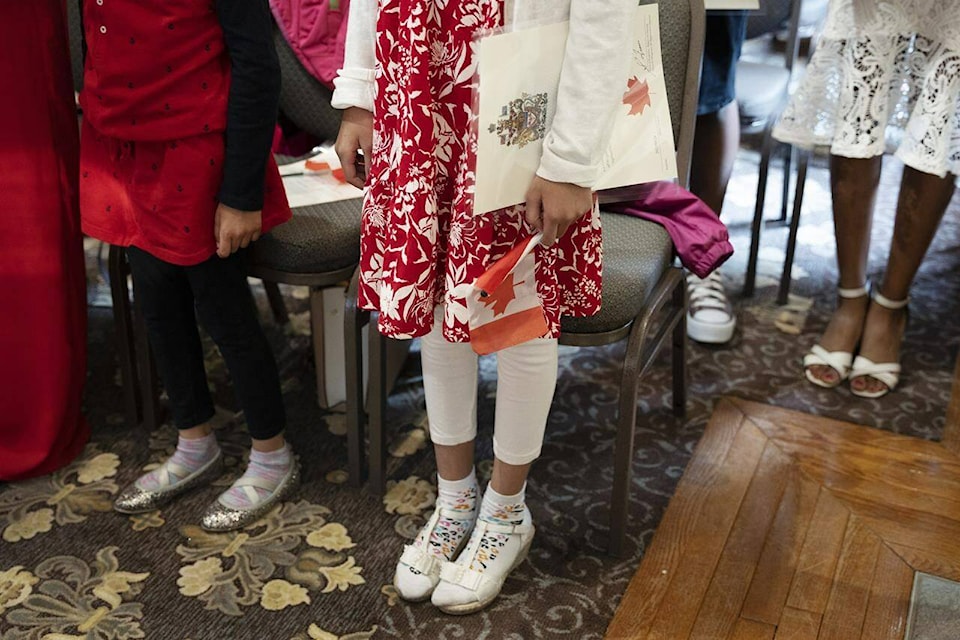Canada’s pace of population growth continues to set records as the country brings in a historic number of temporary residents, largely through international student and temporary foreign worker programs.
The country’spopulation grew by more than 430,000 during the third quarter, marking the fastest pace of population growth in any quarter since 1957.
Statistics Canada released its Oct. 1 population estimates on Tuesday, putting the number at more than 40.5 million.
The agency says the population growth over the first nine months of 2023 has already surpassed the total growth in any other full year, including the record set in 2022.
That has been fuelled by international migration, including about 313,000 non-permanent residents who came to the country over the three months.
StatCan says those non-permanent residents were mostly work and study permit-holders, and to a lesser extent, refugee claimants.
Experts have been warning that the strong pace of population growth in Canada is eroding housing affordability, given the country has struggled to ramp up home construction.
The strong population growth is also posing a political risk for the Liberals, who have seen their popularity tank amid affordability concerns.
Earlier this month, Bank of Canada deputy governor Toni Gravelle gave a speech on the effect of immigration on the economy and inflation in particular.
Gravelle acknowledged there are many benefits from this rise in immigration, noting it has helped grow the economy, expand the workforce and counteract an aging population.
But he warned it’s also adding pressure to a housing market riddled with challenges, including zoning restrictions and a shortage of construction workers.
“This jump in demographic demand coupled with the existing structural supply issues could explain why rent inflation continues to climb in Canada. It also helps explain, in part, why housing prices have not fallen as much as we had expected,” Gravelle told the Windsor-Essex Regional Chamber of Commerce.
Polling suggests Canadians are quite concerned about the impact immigration is having on infrastructure and services in the country.
In a Leger poll last month, about three-quarters of respondents agreed the increase in immigrants is adding strain to both the housing market and health-care system.
And compared to March 2022, the percentage of Canadians who said they want the country to welcome more immigrants than it has in the past had fallen to nine per cent from 17 per cent.
The Liberal government has taken some steps in recent months to address the influx of international students.
In October, Immigration Minister Marc Miller announced new rules to curb fraud in the international student program. He also warned the federal government is prepared to crack down on dubious post-secondary institutions that recruit international students if provinces aren’t up to the task.
More recently, Miller doubled the financial requirement for applicants, meaning they have to show they have more than $20,000, on top of funds for tuition and travel costs.
While Canada does have caps on the number of people granted permanent residency each year, there are no limits placed on international student and temporary foreign worker programs.
Mikal Skuterud, an economics professor at the University of Waterloo who specializes in immigration policy, says the temporary resident streams are attracting migrants who are desperate for a chance to live in Canada.
“Migrants all over the world are seeing what’s happening in Canadian immigration policy. They’re seeing that the permanent residency allocation system has become a bit of a lottery, and that there’s an increasing chance that if they just get here, get onto some kind of a permit, they might get lucky and get PR status,” he said.
Skuterud, who wants to see the government temper the strong flow of temporary residents, says allowing international students to work up to 20 hours a week risks luring more students here.
The federal government should also make more data available on the outcomes experienced by international students to give prospective applicants a clearer idea of what they’re signing up for, he added.
The surge in temporary residents has also been driven by businesses’ demand for migrant workers.
Skuterud has harshly criticized the Liberal government for making it easier for businesses to bring in migrant workers during its tenure — particularly through the low-wage stream of the program.
He says the government needs to bring back 2014 reforms that made it harder for businesses to access temporary foreign workers.
READ ALSO: How population growth is affecting everything from jobs to housing in the economy
READ ALSO: China records 1st population fall in decades as births drop
